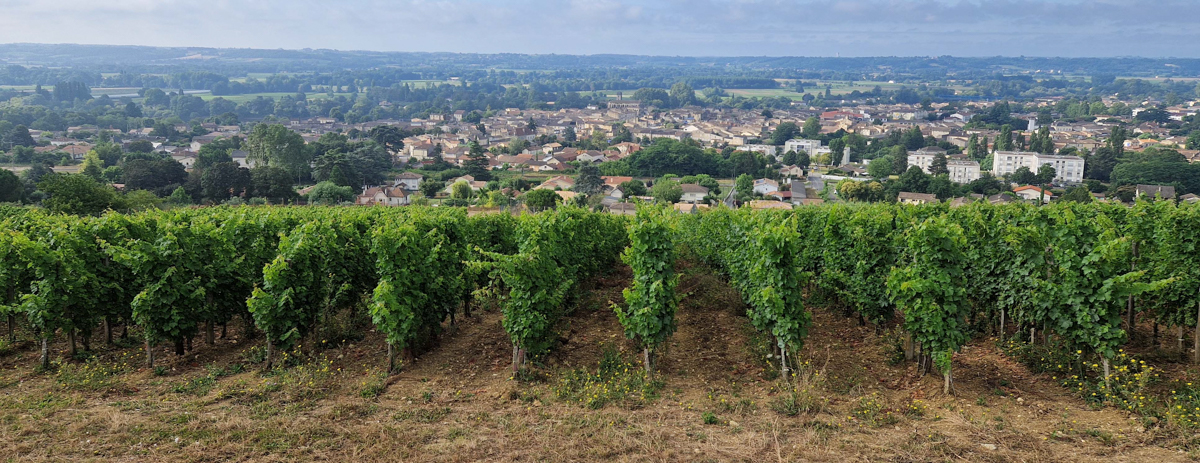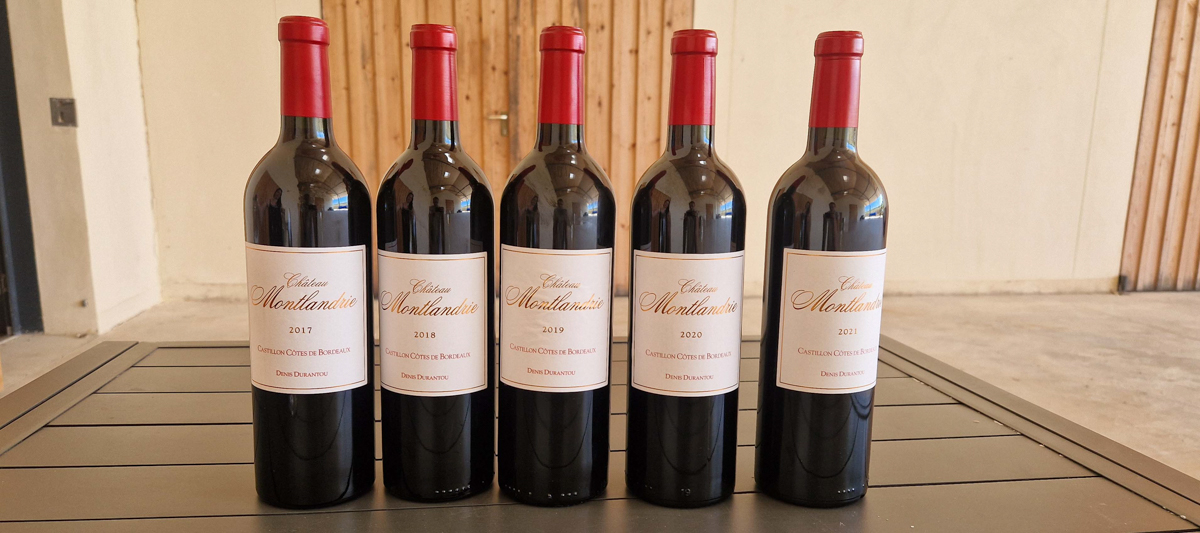
Bordeaux's right bank is studded with famous properties nestled in close proximity to one another. Driving through Saint Emilion and Pomerol, you will see celebrated vineyards and châteaux almost on top of each other, with the likes of Cheval Blanc nearly spilling from one appellation into the next. The concentration of famous names and vineyard sites makes it easy to see the underlying quality of the various terroirs and financial prowess that provides. Take a ten minute drive southeast, however, and the landscape shifts, moving from the plateau to rolling hills, the highly-designed châteaux replaced by more functional, working buildings. The vines remain, and it is on these slopes that there are some stunning, under-appreciated vineyards - if you know where to look.

It was here in late July we met with Noemie Durantou. Most famously of L'Eglise Clinet in Pomerol, Noemie and her sister Constance have taken on the considerable work of their late father, Denis. On this day we looked away from the family's most famous wine to Denis' last ambitious project, Montlandrie. The first vintage made here by the Durantous was 2009, but the work done firstly by Denis and now his daughters to overhaul the vineyards and elevate the quality of the wines is nothing short of staggering.
Montlandrie lies in Castillon or, more precisely, on a plot of often steep slopes above the town. The site is immediately captivating, a beautiful spot overlooking the entire area. The vines, too, are impressive. They are fairly young due to replanting, but even the Cabernet Sauvignons planted by Noemie in 2021 - and which first went into the blend in 2023 - look in rude health despite a very tricky growing season so far in 2024. The vineyard has changed drastically since 2009 - there are more Cabernets (both Franc and Sauvignon), the row orientation has shifted in places, the planting density has changed, and there has been huge work creating terraces on a once singular slope to prevent erosion and to aid the planting of rows in the right orientation for quality (from the top to the bottom of the slope). Olive trees grow at the bottom of the vineyard and in rows close to the terraces - these are now pruned by Constance herself, yielding much better quality and quantity for a small production of olive oil. There is more than a hint of Tuscany as you weave through the vineyards and groves.
There is a small issue with young locals using the vineyard as a place to relax - unsurprising as it is a beautiful, tranquil spot to walk through. There are distant plans for an open-air theatre beneath one of the terraces, where live shows could be set on a stage among the vines but, unsurprisingly, the focus remains on raising the quality and profile of the wines for now. This is a special place to grow vines and it is easy to see why Denis and then Noemie and Constance hold such enthusiasm and excitement for what can be done here.
After the vineyard visit, we returned to the winery for a vertical tasting from 2017-2021. The building is in keeping with the area, designed for utmost practicality with small tanks for plot-by-plot fermentations and temperature-controlled elevage. Solar panels adorn the building, making it self sufficient. There are no frills, everything is geared towards substance rather than style. This shows in the wines, for which there are full tasting notes below. We recently offered the 2017, and I'm delighted to say it showed beautifully again in this line-up and was arguably the pick of the bunch to drink now. The 2019 is supple and delicious; you can drink it now but it feels like there is another gear here with a little more bottle age. The 2021 was a surprise, red fruited but delicious to drink now with an airy freshness. Both the 2018 and 2020 were impressive though they are broad-shouldered, serious wines that to my palate need more time in bottle before opening. They certainly have the density to age, with a textbook layered structure and spice, and both opened up as we continued to taste and talk about the future for this project.
I have rarely enjoyed a visit as much as this one to Montlandrie. I have tasted these wines multiple times a year since the first vintage was shown from barrel in 2010, but never set foot in the vineyard. Seeing the place first hand and walking through the vines has given me a much greater understanding and appreciation for what is happening at Montlandrie and I hope to have captured some of it. It is easy to see why the wines have improved so much since the first Durantou vintage, and why the 2023 with the latest Cabernet plantings was so impressive from barrel. The work from the Durantous to put the raw materials in place to make great wines from this superb site has been significant and we can now see in the glass that it has been well worth the effort.
Montlandrie currently has 12 hectares under vine, the majority planted to Merlot (~70%) with growing proportions of Cabernet Sauvignon and Cabernet Franc. The soils are similar to Saint Emilion's plateau: a blend of limestone with some silex and clays.
2017
Intense, deft red fruits on the nose give this wine a supple fragrance with notes of cherry blossom, ripe plums and just a hint of smoky spice. The palate is chalky and fine with an impeccable balance that leans to freshness. The fruit is cool but ripe, layering more notes of cherry and plum with a subtle hint of rosemary and almost garrigue spice. Elegant and eminently drinkable, this is a delicious glass of wine to be enjoyed over the coming five years.
2018
In contrast to the '17 this is bold and ripe, with polished dark cherry, kirsch and incense tones on the nose. The palate has a chalky depth, with impressive and intense fruit that is never overboard. Layers of wood spice, black cherry and cocoa all come through on the spicy finish. With air this gets better and better, opening up higher toned but still dark fruit as the broad tannins soften and relax into the wine.
2019
A quintessential 2019, with an easy ripeness and pop of freshness. The nose is very enticing: notes of violet and red fruit blossoms come with just a hint of vanilla. The palate is seamless, with a succulent glossy texture that is so inviting to drink now. Tones of blueberry and red cherry add to the sheen of this delicious, moreish Montlandrie. The tannins are already so polished and supple you can easily drink this now. The length and growing aromatics after the bottle has been open for half an hour suggest there is even more to come from this vintage.
2020
Deeper in colour and in fruit profile than the 2019, the nose here has real integrity of ripe, dark fruit that just edges into blackcurrant and sweet dark cherry. Chiselled, muscular tannins are carved around a dense, intense core of fruit on the palate. Very focused, with more precision and a cooler balance than the 2018, this is a wine full of promise. Very long finish. Give it a couple of years before approaching.
2021
A pleasant surprise, the 2021 is a bright, crunchy, red fruited delight. In the heat of summer, this clean, zippy wine is absolutely delicious. Silky and pure with notes of red cherry, raspberry and vanilla bean, the tannins are powdery and light, allowing the fruit to shine. A wine built on freshness and drinkability, this is a very moreish Montlandrie ideally suited for drinking over the next five+ years.

